DmitryUlyanov / Age
Programming Languages
Labels
Projects that are alternatives of or similar to Age
This repository contains code for the paper
"Adversarial Generator-Encoder Networks" (AAAI'18) by Dmitry Ulyanov, Andrea Vedaldi, Victor Lempitsky.
Pretrained models
This is how you can access the models used to generate figures in the paper.
-
First install dev version of
pytorch 0.2and make sure you havejupyter notebookready. -
Then download the models with the script:
bash download_pretrained.sh
- Run
jupyter notebookand go throughevaluate.ipynb.
Here is an example of samples and reconstructions for imagenet, celeba and cifar10 datasets generated with evaluate.ipynb.
Celeba
| Samples | Reconstructions |
|---|---|
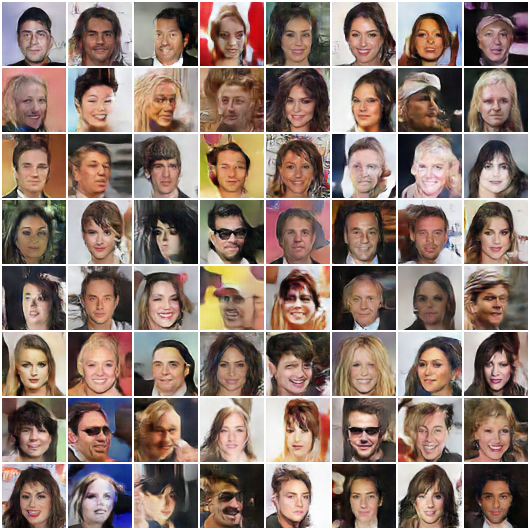 |
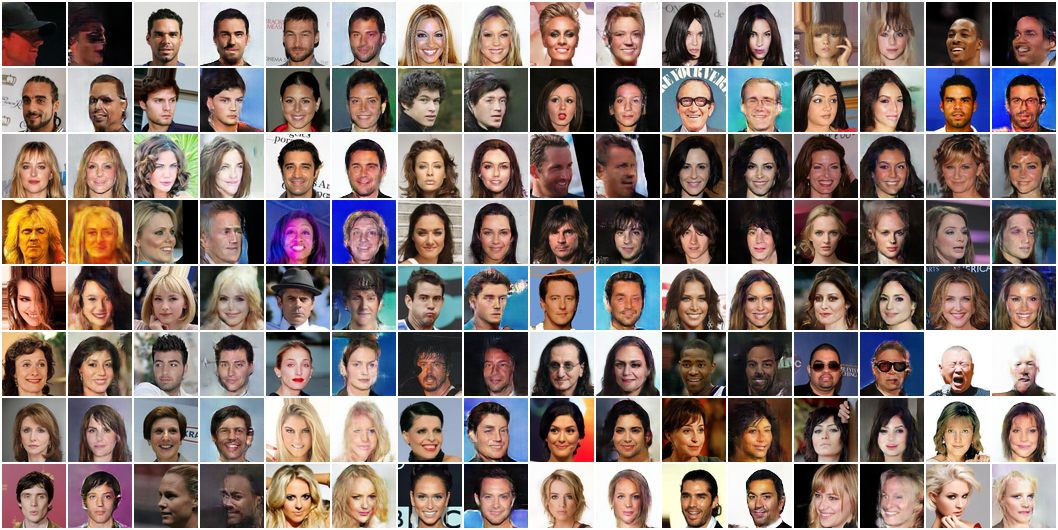 |
Cifar10
| Samples | Reconstructions |
|---|---|
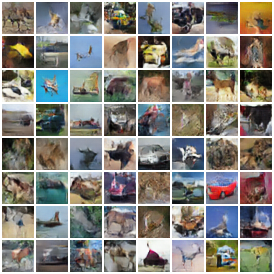 |
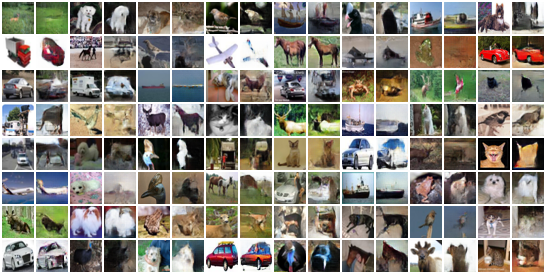 |
Tiny ImageNet
| Samples | Reconstructions |
|---|---|
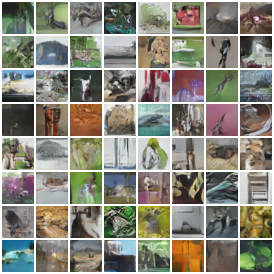 |
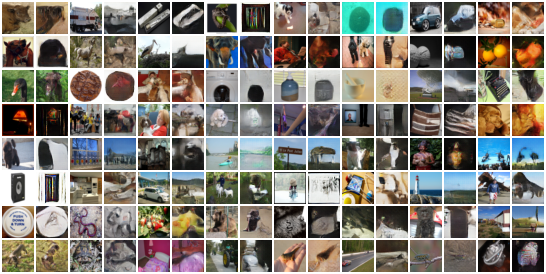 |
Training
Use age.py script to train a model. Here are the most important parameters:
-
--dataset: one of [celeba, cifar10, imagenet, svhn, mnist] -
--dataroot: for datasets included intorchvisionit is a directory where everything will be downloaded to; for imagenet, celeba datasets it is a path to a directory with folderstrainandvalinside. -
--image_size: -
--save_dir: path to a folder, where checkpoints will be stored -
--nz: dimensionality of latent space -
-- batch_size: Batch size. Default 64. -
--netG:.pyfile with generator definition. Searched inmodelsdirectory -
--netE:.pyfile with generator definition. Searched inmodelsdirectory -
--netG_chp: path to a generator checkpoint to load from -
--netE_chp: path to an encoder checkpoint to load from -
--nepoch: number of epoch to run -
--start_epoch: epoch number to start from. Useful for finetuning. -
--e_updates: Update plan for encoder.<num steps>;KL_fake:<weight>,KL_real:<weight>,match_z:<weight>,match_x:<weight>. -
--g_updates: Update plan for generator.<num steps>;KL_fake:<weight>,match_z:<weight>,match_x:<weight>.
And misc arguments:
-
--workers: number of dataloader workers. -
--ngf: controlles number of channels in generator -
--ndf: controlles number of channels in encoder -
--beta1: parameter for ADAM optimizer -
--cpu: do not use GPU -
--criterion: Parametricparamor non-parametricnonparamway to compute KL. Parametric fits Gaussian into data, non-parametric is based on nearest neighbors. Default:param. -
--KL: What KL to compute:qporpq. Default isqp. -
--noise:spherefor uniform on sphere orgaussian. Defaultsphere. -
--match_z: loss to use as reconstruction loss in latent space.L1|L2|cos. Defaultcos. -
--match_x: loss to use as reconstruction loss in data space.L1|L2|cos. DefaultL1. -
--drop_lr: eachdrop_lrepochs a learning rate is dropped. -
--save_every: controls how often intermediate results are stored. Default50. -
--manual_seed: random seed. Default123.
Here is cmd you can start with:
Celeba
Let data_root to be a directory with two folders train, val, each with the images for corresponding split.
python age.py --dataset celeba --dataroot <data_root> --image_size 64 --save_dir <save_dir> --lr 0.0002 --nz 64 --batch_size 64 --netG dcgan64px --netE dcgan64px --nepoch 5 --drop_lr 5 --e_updates '1;KL_fake:1,KL_real:1,match_z:0,match_x:10' --g_updates '3;KL_fake:1,match_z:1000,match_x:0'
It is beneficial to finetune the model with larger batch_size and stronger matching weight then:
python age.py --dataset celeba --dataroot <data_root> --image_size 64 --save_dir <save_dir> --start_epoch 5 --lr 0.0002 --nz 64 --batch_size 256 --netG dcgan64px --netE dcgan64px --nepoch 6 --drop_lr 5 --e_updates '1;KL_fake:1,KL_real:1,match_z:0,match_x:15' --g_updates '3;KL_fake:1,match_z:1000,match_x:0' --netE_chp <save_dir>/netE_epoch_5.pth --netG_chp <save_dir>/netG_epoch_5.pth
Imagenet
python age.py --dataset imagenet --dataroot /path/to/imagenet_dir/ --save_dir <save_dir> --image_size 32 --save_dir ${pdir} --lr 0.0002 --nz 128 --netG dcgan32px --netE dcgan32px --nepoch 6 --drop_lr 3 --e_updates '1;KL_fake:1,KL_real:1,match_z:0,match_x:10' --g_updates '2;KL_fake:1,match_z:2000,match_x:0' --workers 12
It can be beneficial to switch to 256 batch size after several epochs.
Cifar10
python age.py --dataset cifar10 --image_size 32 --save_dir <save_dir> --lr 0.0002 --nz 128 --netG dcgan32px --netE dcgan32px --nepoch 150 --drop_lr 40 --e_updates '1;KL_fake:1,KL_real:1,match_z:0,match_x:10' --g_updates '2;KL_fake:1,match_z:1000,match_x:0'
Tested with python 2.7.
Implementation is based on pyTorch DCGAN code.
Citation
If you found this code useful please cite our paper
@inproceedings{DBLP:conf/aaai/UlyanovVL18,
author = {Dmitry Ulyanov and
Andrea Vedaldi and
Victor S. Lempitsky},
title = {It Takes (Only) Two: Adversarial Generator-Encoder Networks},
booktitle = {{AAAI}},
publisher = {{AAAI} Press},
year = {2018}
}

